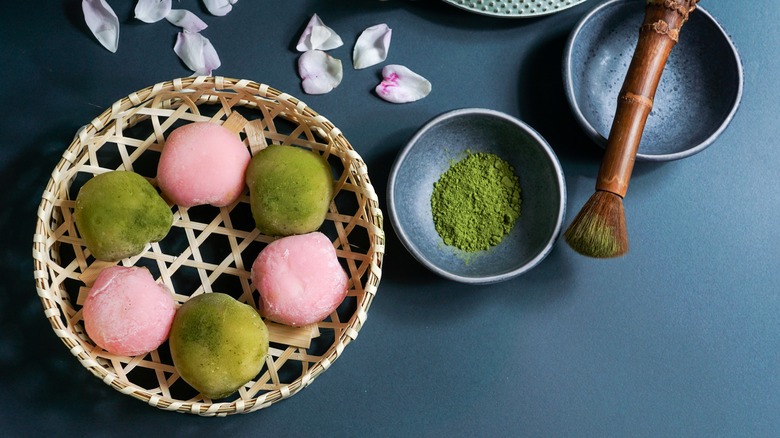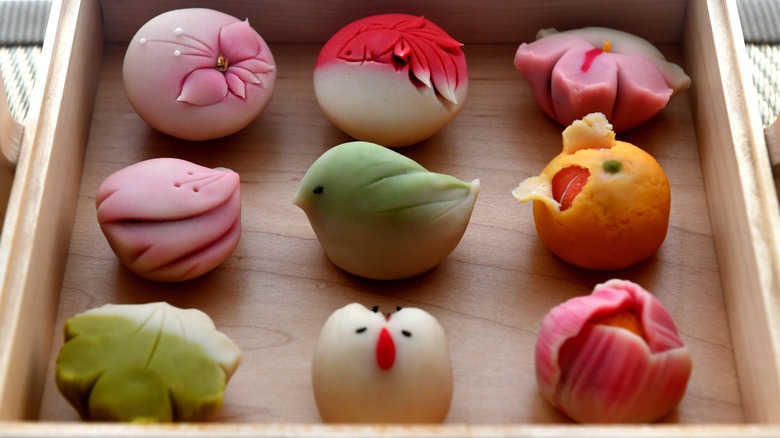The Difference Between Mochi And Dango
There's so much to love about Japanese culture and cuisine. For international eaters with a sweet tooth, it's hard to beat wagashi, a category of traditional Japanese confectionary. While there are many different styles of wagashi, two of the most common (and commonly confused) types are mochi and dango. While they're both rice-based treats found in similar flavors like red bean and matcha, the critical difference lies in their preparation.
According to JapaneseTaste.com, to make mochi, glutinous rice is cooked via steaming and then pounded to create a paste. This paste is then shaped, traditional mochi flavoring is added, and then the paste is cooked via boiling, steaming, grilling, baking, or frying. The final product is typically called a daifuku when wrapped around various fillings. In contrast, dango is made by combining dry rice flour and hot water, which is then mixed into dough, flavored and sweetened, boiled, and then grilled on skewers. Dango is smaller and can be served on its own or integrated into other desserts.
Wonderful wagashi of all varieties
Many find dango to be more straightforward to produce, as it doesn't require the extensive pounding that mochi does. Furthermore, Gurunavi says the dango-making process creates a chewier texture, unlike the softer mouthfeel many love in mochi. However, the choice comes down to personal preference.
Beyond their differences, it's important also to remember the many things mochi, dango, and the rest of the wagashi universe have in common. Almost all wagashi are made from solely plant-based materials, making them suitable for vegans. However, some may contain dairy, eggs, or honey, meaning those with strict dietary needs should double-check. They're also typically enjoyed with a satisfying cup of green tea, whether as an after-meal dessert or part of a formal afternoon tea ceremony. These sweets are also treats prized for their beauty and aesthetics. In some cases, the visual appeal is almost as important as the taste! This is particularly the case around the New Year.
No matter which style of wagashi you prefer, there's no doubt they represent a delicious, beautiful addition to the world's baking heritage.

